Brothers Marquis (left) and Dominique (right) Garrett died after an armed home invasion. Photo courtesy Facebook
JACKSON — On the night of Thursday, Feb. 9, a group of twenty-something Jacksonians were hanging out in Westwood Apartments at 3150 Robinson Road playing dominoes. Suddenly, several men walked in pointing guns and demanding their belongings.
The young adults in the apartment, which is near the United Community Pentecostal Church, were also armed, as many Mississippi residents often are in anticipation of a home invasion. Instead of handing over their stuff, police say the victims fired on the robbers.
They hit one of the intruders, Jacarin Robinson, 21, in the head, killing him. Another robber, Jessie Kelly, 23, was hit; one of his friends drove him to Merit Health, where he died at 4 a.m.
One of the robbery victims, Dominique Garrett, 23, died in the apartment. He had attended Jim Hill High School and studied welding at Hinds Community College. His brother and roommate, Marquis "Quisy" Garrett, 25, was also shot. An ambulance took him to the University of Mississippi Medical Center.
After Jackson police arrived, they recovered several weapons at the scene. They later released a statement saying that the three deaths—of two apparent home invaders and one victim, all young black adults—were the "8th 9th, and 10th homicide investigations for 2017." Police were searching for Carl Harper, 24, who turned himself in Friday night but was released.
Marquis Garrett then became the 11th Jackson homicide this year when he died the following Sunday. The city's homicides would be equal to last year's seven year-to-date had these four young men not died in a few minutes of gunfire.
"Hey nephew this crazy that my trip to Mississippi is not what I ever dreamed of," his auntie posted on Quisy's Facebook page Monday morning. "I always pictured the trip would be so much fun, us kickin it, laughing, catching up on the good times. I wasn't ever planning on my trip would be coming to you and Dominique Garrett's funeral; that wasn't the plan."
Police and the city's media did not immediately frame the four-death incident as the murder of two robbery victims alongside the self-defense, or "Castle Doctrine," killings of two attackers. The assumptions are different for young black men in a city and state where armed self-defense is otherwise valued and defended, even against unarmed assailants, much less armed ones.
In fact, JPD believes the two groups had at least one person in common—someone in the Garretts' apartment that night who knew the robbers. "It's a tragic and unfortunate situation that four men had to lose their lives in such a manner," Commander Tyree Jones, the JPD spokesman, said the following Monday.
"We talk all the time about gun violence in the city. In the majority, the perpetrators know one another in some kind of way. There was no forced entry into the apartment; we know there was an affiliation between both parties."
Jones said no evidence shows the shootout was gang-related and confirmed that none of the men had outstanding warrants. That does not mean, however, that the community as a whole will not frame it as another "gang" shootout; it will not help that the young men had posted pictures of themselves with guns and flashing what looks like "gang" symbols on Facebook.
Many young black Jacksonians say police and the general public nearly always frame their acts of self-defense, including with guns, as mutual acts of violence and treat both assailants and victims as guilty parties in a way that does not usually happen to older, wealthier or certainly whiter people who fire on robbers or attackers.
Perversely, this attitude that they are all guilty no matter who struck first means that many young people believe they must have a gun to protect themselves, even as they openly say they abhor the violence in their communities.
"Some people carry guns for the wrong things, but a lot of people carry guns because if you don't carry a gun in Jackson, Mississippi, you gone get robbed or shot," a young rap artist from the Washington Addition who goes by Kvng Zeakyy told the Jackson Free Press in interviews last year. He had been in and out of juvenile detention since he was in the fourth grade and participated in the Youth Media Project last year.
"People might leave you alone just because they see your gun," he said, explaining the desperate survivalism of kids living in often-violent neighborhoods, which do not represent the whole of black America despite presidential stereotypes to the contrary.
When gun violence does happen, the retaliation cycle often kicks in, which can lead to long-term "beefs" between two groups and dozens of deaths and injuries over many years.
'They Jumped Him First!'
Amber Taylor was walking through the Valley North neighborhood in Jackson on a cool summer evening with her boyfriend CJ when suddenly three young men started trailing them. Her heart began pounding with fear, and CJ started swearing under his breath.
"They're following us, aren't they?" she asked her boyfriend, then 16.
"Yeah," he answered.
CJ already had been in and out of juvenile detention, Taylor wrote in a column for the Mississippi Youth Media Project. His mother's boyfriend had mentally and physically abused him starting when he was 8, and he started getting in trouble at school. By the time he was 12, older boys approached him about becoming a 4CH, or 4 Corner Hustler, but Taylor was trying to help him leave that life behind.
Solutions: How to Prevent Gun Violence
Evidence-based programs that can help prevent and reduce community gun violence
"Look, I want you to go back to my house, aight? Text yo mama," CJ told Taylor. "I'm gonna stay outside and see what these boys want. Don't call the police. I'll handle it myself." He then pushed her inside and slammed the door.
Outside, the three young men jumped CJ, and she decided to call 911 anyway to help her boyfriend. Soon, CJ's brother showed up with a couple of friends to help. She was standing on the porch when the cops got there at least 15 minutes after she called them, she wrote.
"They jumped him first!" she screamed, as one of the cops slammed her boyfriend's face into the pavement. She remembers three cop cars, and that two of the original had disappeared.
"Yeah, who gives a damn? A gang fight is a gang fight, little girl," the officer answered before cuffing the third assailant, as well as CJ, his brother and everyone else on the scene. They all ended up in Henley-Young Juvenile Justice Center, and she did not see him for another three months.
A disturbing number of young people growing up in poorer, neglected Jackson neighborhoods have either witnessed violence or experienced it themselves, often many times, including watching friends dying in pools of blood in front of them. Despite under-funded schools with holes in the roofs, no jobs for young people or good transportation to the ones across town, and the crack epidemic that crippled the family tree a couple generations back, many outsiders simply blame their families, who probably grew up in similar conditions.
"The root causes of crime and disorder in our disadvantaged communities involve so many systemic dysfunctions that it becomes hard to imagine how law enforcement can begin to stem the tide of group and gang violence," wrote Joshua A. Ederheimer, the former assistant chief of the Washington, D.C., police department and later the director of the Office of Community Oriented Policing Services, or COPS, in the U.S. Department of Justice, in the group's "Group Violence Intervention: An Implementation Guide."
The local stories are horrifying and mirror what too often happens in challenged urban areas across the U.S. A 9-year-old watching his best friend gunned down while playing dice in a park. Another teenager's cousin killed at age 12 in a drive-by shooting over a long-running beef. Another's brother left bleeding in the middle of a street after an ambush. Still others hitting the ground when some guy pulls out a gun in front of a busy store when he saw someone he was beefing with—you killed my brother, who was part of a group that attacked your cousin, who was part of a crew that took out a member of my brotherhood, and so on.
Still, many young people say they will not call the police when they get in trouble, and not just because of fear of reprisal. "Police ain't gone be too much help," Kvng Zeakyy told the Jackson Free Press. "You think somebody shooting at you, police ain't gone be like, 'Move, son, I've got this' and start shooting for you. No! They gone wait 'til everybody get done shooting and then lock everybody up, that's what they're going to do. It's just the truth."
Disdain for police by the young people most victimized by gun violence in Jackson and America, and the return disgust from many officers, is a problem that the federal COPS program acknowledges, saying this gulf causes "extraordinary damage."
"A community that sees the police as a race predator cannot make common cause with the law," wrote David Kennedy, director of the National Network for Safe Communities, in the COPS intervention guide. "Police that see the communities they serve as corrupt cannot make common cause with their people. These conflicts are real."
It is a problem Police Chief Lee Vance acknowledges locally: People who don't trust police will not help them. "If you're seen in these neighborhoods as being a servant and not an adversary," Vance said during a drive through the Second Precinct last year, "it's going to work out much better." If the police act respectfully, residents are more likely to call them when they witness crime, and provide intelligence, Vance said.
Young Jacksonians of color often distrust the police due to what many of them have observed or experienced; and they believe the police will arrest everyone on the scene instead of trying to really figure out who was actually at fault and who was trying to defend themselves. And if the victims have guns in a state where many people carry guns, it increases the likelihood that they will be arrested at the scene.
In her YMP column, Taylor challenged Mayor Tony Yarber's statement at Millsaps College that the city needed more "treehouse kids"— young people who want to work with the police in their neighborhoods rather than avoid them.
"I, along with CJ and his brothers, were practically screaming for them to listen," she wrote on jxnpulse.com about the police, "and we were told to 'shut up and cooperate' ... I wanted to know so badly the day CJ went to court just where safe relationships and support were long ago when he needed it the most."
Taylor demands to know why more adults do not stand up to help young people before they end up in a cycle of violence.
"Numerous times CJ was put out of class or kicked out of school," she wrote. "No one ever asked, 'What's wrong?' or 'Why did you do that?' It was always, 'That boy don't have no home training' or 'He just gonna end up in jail' before they scolded him and told him what he should be doing. He never wanted to hear what they had to say because they never wanted to hear what he had to say."
'Trying Circumstances'
Still, with police responding to incidents like the Feb. 9 quadruple homicides on Robinson Road—and the existing problem that both the robbers and their targets that night might fear both the cops and retribution for ratting out the guilty—it is not hard to understand why police choose to round everyone up and sort it out later.
After all, dead young men lay in front of them in an apartment filled with firearms, with no end in site from a cop's perspective. Even without those four deaths, the city was on track for the same number of homicides as last year, and the police say they have no way to prevent most of them, even as the public blames them if they can't magically know where a gun is about to fire.
At a Dec. 9 COMSTAT meeting, Chief Vance praised his cops' efforts despite the fact that the city had seen 10 more homicides by that day than the 55 the year before. For the most part, he said, police can do little to stop murders, especially between people who know each other.
"No matter how hard we work, we cannot control every time somebody loses their temper, pulls a gun and shoots somebody that they have been knowing for 20 years. They don't email us, and they don't text us before they do it; they just do it," Vance told the officers.
"And all we have the chance to do is go over there and pick up the pieces."
The chief emphasized that crime had fallen in all other categories other than homicide. At that meeting, overall crime was down about 17 percent over the same period in 2015 even if murder was up.
Vance was quick to take credit for the drops, if not the homicide increases. "Crime is almost 20 percent down. And that represents a lot of hard work; it don't automatically get like that. So we are going to continue to do what we do, under a lot of trying circumstances," the chief told his troops in December.
What that often translates into, especially during a city election season, is a vow to increase enforcement in "hot" pockets where police think crime might occur.
A typical approach might have the chief and sheriff standing next to each other and announcing a joint operation, usually heavy sweeps of a distinct zone where crime has spiked. A show of force may slow down crime for a short time in that area, and may push it elsewhere. At least it shows the public that the police are trying.
Hinds County Supervisor Robert Graham, a former JPD spokesman, is calling for more sophisticated "predictive policing" as part of COMSTAT during his run for mayor. That is, do a better job of crunching the data to anticipate where police need to be when and who likely shooters are.
"I believe that you have to concentrate on hot spots and hot people. Because what is making this spot hot is this guy," he said in an interview. "... We would make it hot for him. You have to concentrate on the hot people, not just the hot spots. Everyone in Jackson is not a criminal. Everyone is not committing crimes. The officers know who (the criminals) are. Let's target them. I don't mean target them in a negative way."
Graham is right that there are sophisticated ways to "target" young people likely to commit violence; David Kennedy's "Operation Ceasefire" is a way that police do that working with service providers and the community. But it's easier said than done: Jackson tried a Ceasefire approach it called MACE before the current chief and sheriff were in place, but just used it as an excuse for additional neighborhood sweeps. The effort ignored the program components that might help prevent a violent crime by getting to the young people before they pulled the trigger, as the Jackson Free Press reported last year. Plus, such programs take immense resources and organization, even as the general public demands more police.
Predicting robbery patterns are one thing, but four dead men in a shootout is another, JPD believes. You can hear the weariness in officers' voices when asked how they can stop such tragedies.
"How can you prevent a crime like this?" Commander Jones said Monday. "We don't get a call from someone about to go out and shoot someone and commit a violent crime. ... We usually get the call afterward." Jones added that there are "no precursors" that predict that kind of violent gun play.
But there are precursors that indicate whether particular young people are more likely to become violent, even if the public might not want to hear about them and at least one of them goes against conventional policing wisdom.
The top two precursors? First, stop stuffing minors into the backs of police cars, detention centers and jail cells, and do everything possible to keep and engage them in school.
Arrests Increase Crime?
You really can't make up that the gang many young people in Jackson identify with, often in name only, started in a youth detention center near Chicago. The Insane Vice Lords began in the 1950s inside the Illinois State Training School for Boys in St. Charles, Ill. After the club's members left the facility, they created a street gang and started defending their turf and moving into criminal enterprises.
The JFP's 'Preventing Violence' Series
A full archive of the JFP's "Preventing Violence" series, supported by grants from the Solutions Journalism Network. Photo of Zeakyy Harrington by Imani Khayyam.
Likewise, black and Latino gangs in America actually began as a reaction to white gangs enforcing segregation, especially in public housing in big cities. Even the notorious Bloods and Crips were first a way to defend their neighborhoods against other ethnic gangs.
Jails and prisons are a breeding ground for gang, "group," "set" or "crew" recruitment, and a place that research shows actually increases the likelihood of an inmate later committing a worse crime—especially when he gets out and comes home to his neighborhood and cannot get work because he has a police record and few skills. The state Legislature is finally grappling with the re-entry problem, with even some conservative lawmakers pushing for a re-entry reforms to help with the transition back to a productive life rather than more crime.
And the younger a person is when pulled into a cop car or behind bars, the more likely he or she is to commit a worse crime. In a 2015 study on Jackson crime pushed for by now-mayoral candidate Sen. John Horhn, paid for by the Mississippi Legislature and commissioned by Attorney General Jim Hood, BOTEC Analysis Corp. warned that over-policing young people can have a devastating effort, both for them and the larger community.
Horhn originally lobbied for $10 million in resources to Jackson to help strengthen the criminal-justice system, but the Legislature settled on funding a $500,000 "Capital City Crime Prevention Study that mapped criminal hot spots and shined a bright light on problems from Jackson Public Schools to the Hinds DA's office. "It has useful data in it," Horhn said. "If we had been able to get full support of certain plays in law enforcement and the community, it would be even more useful and illuminating."
But, Horhn added, "It's not too late." The "Precursors of Crime in Jackson: Early Warning Indicators of Criminality" section of the BOTEC report states bluntly that since the 1970s, helped along by politics, criminal justice has moved from rehabilitation toward the belief in punishment as an end goal. But, it warns that incarceration "plays a critical role in recidivism." "Juveniles who spent time in correctional facilities are more likely to drop out of high school and be on public assistance later in life," BOTEC warned.
In addition, BOTEC reports they are more likely to commit worse crimes, abuse substances, become single parents, drop out of school and suffer from trauma.
Still, it is extremely common to talk to young Jacksonians and hear that they've been repeatedly put into detention, often for minor crimes, such as Kvng Zeakyy and his friend breaking into their elementary school to steal a computer they couldn't lift when they were in the fourth grade. Thus, the cycle of recidivism begins.
Arrests and incarceration lead to the other primary precursor (and vice versa), often getting the child kicked out of school, or at least stuck in a low-performance rut or alternative school until he or she eventually drops out.
BOTEC found that 225 young people in Jackson Public Schools are at the highest risk of ultimately committing violent crime precisely because they lag in school attendance and have had frequent encounters with police. The question becomes: Who are those 225, and how can the community wrap services around them to interrupt the cycle of violence and retaliation?
Document
Capitol City Crime Prevention Study: School Discipline and Youth Violence Reduction in Jackson
The Cure Violence approach, which epidemiologist Gary Slutkin of the University of Illinois at Chicago School of Public Health started, is one route to that interruption, and it avoids the police who young people so often do not trust. Instead, it hires and trains "violence interrupters"—usually men and women who have been in trouble, gangs or prison—to mentor young people away from the lifestyle. They also rush to young people connected with violence to stop retaliation, such as the friends of the four young men killed last week.
"The lockup solutions are not the solutions. They're not," Slutkin said in an interview. "Behavior is not primarily formed by punishment. It's not maintained by fear of punishment. Those are old ideas."
But the program, even as it has a proven track record, requires the community to gather the resources to fund the program (which, it so happens, creates jobs for previous offenders) even as mayoral elections usually bring out calls for more police officers. Slutkin says real prevention saves money spent on public-health costs and prison beds down the road. "The easiest way to save money is to keep people out, not to put people in," he said. "Public-health methods keep people out because the event doesn't happen."
Sen. Horhn has talked to Slutkin's group several times. "Programs like Cure Violence ought to be out front and center in the planning process," Horhn said this week. "It's been demonstrated to work in other parts of the country, and provides gainful employment to ex-offenders once they've paid their debt to society. The interrupters are often more effective and convincing when they're talking to young people."
It can be hard to convince a larger community to make that investment if it continues to think of the people caught in this cycle as all members of violent gangs that have run the drug trade in low-income parts of the city for decades, that they're violent and hopeless. That's a mythology, however.
Solutions to 'Heartbreaking Violence'
Maisie Brown, Donna Ladd and YMP present evidence-based solutions to crime in Jackson.
Yes, many of them flash traditional Vice Lords or Black Gangster Disciples symbols on Facebook, or have pitchfork tattoos or other symbols of belonging to something bigger than themselves. But most "gangs" today are not the organized-crime units they used to be—an exception in Mississippi is the dangerous and whiter Simon City Royals, which deals meth and is strong in Rankin County and South Mississippi.
Police say most of the "gangs" now in Jackson are more like cliques with guns in today's world—still dangerous, but they exist as much as a get-your-back brotherhood as a way to earn a living. They are much more likely to kill each other in the back-and-forth than strike out at a stranger, although it can happen. The COPS program chooses not to refer to "gangs" at all, opting instead to call them "groups."
"The simple fact is that many high-rate offenders associate in groups and that these groups drive serious violence," the intervention guide explains. "Many (and often most) such groups will not fit the statutory definition of a gang." And as Amber Taylor explained in her YMP column, many young people pretend they're in gangs, called "false set claiming." The truth is, though, that flashing a Vice Lords symbol on Facebook doesn't indicate any kind of organized-crime membership.
However, the guns and the beefs, especially when involving retaliation for a former act of violence, are an explosive mix, especially for the young people on both sides of the feud. Violence may be a way of life, but it doesn't mean most young people, with gang-related tattoo or not, are happy about it. Almost to a person, they tell the stories with trauma-soaked gazes and body language. They say they want something, anything "positive"—which broken down means they want someone to believe in them and say it out loud and not assume the worst about them and their friends.
They also believe they are the ones who must stop the carnage, to bring other young people together to do it, but they do not know how to stop the historic cycle of someone firing again on a perceived enemy, making a ceasefire seem impossible.
Meantime, violence spreads like a virus, as Slutkin calls it, with too little will or knowledge to stop it on the part of those who could as a group—the rest of us.
And, so far, the nation's police have done either too little or too much to curb the violence, depending on whom you ask. The answer to the riddle is probably both—cops under-investigating gun violence against young people of color to see who actually is at fault, while often sweeping through a chosen area, treating any young person as a possible criminal.
A new approach is desperately needed, violence experts say, even if they do not all agree on exactly how to do it, especially on whether police should play a central role. They all say, though, that it will take more than flooding disadvantaged areas with police officers.
Urgently, that means squarely facing the deadly effects of trauma.
Traumatized into Violence
Growing up in Subdivision 2 in west Jackson, Mayor Tony Yarber both lost his best friend to a guy with a sawed-off shotgun when he was 16, and one of his first cousins was shot 17 times in 2000; he was only a year older than Yarber, then 22, and had six children.
Caught in the Revolving Door of Juvenile Detention
Charles McDonald, 17, was in and out of juvenile detention—and then he ended up dead nearby.
"All six of those children were left without a father to provide. Those children were traumatized," Yarber said at a JFP forum at Millsaps College last summer. That is exactly where the "virus" can start, experts say.
While more privileged and whiter communities pass down life savings, real estate and other wealth to their children and grandchildren, the communities many black and Hispanic kids are growing up in often pass on trauma to new generations. Maybe granddad was harassed or lynched, then dad or mom or both sold crack and went to prison for decades, and now the child is nearly raising himself as society scowls at him.
Or maybe the young person grew up with at least one parent working three jobs to make life better for her, but she cannot escape the reality of the streets, especially with mom gone all the time to help her have a future. Both are too often true despite the harmful stereotypes.
Untreated trauma can turn young people into killers. "When nobody teaches you how to be effective in conflict resolution, then guess what comes up every time?" family counselor George Porter said in a Dec. 23 interview. "First is a feeling of inadequacy and insecurity and, secondly, it is covered by anger."
"And when anger is there, and you don't know how to deal with it, you take out the biggest damn weapon you can find and blow the son-of-a-bitch away," added Porter, who attended the mayor's recent criminal-justice task-force meetings to discuss solutions.
Confronting generational trauma is a vital part of New Orleans' anti-violence approach, called NOLA for Life, which is a systemic plan that incorporates programs from Kennedy, Slutkin and service providers confronting trauma, as well as work programs and midnight basketball.
Such an integrated "wraparound" approach is much more effective than blaming parents for not knowing what to do, Dr. Charles Corprew, a child and behavioral psychologist in New Orleans, advises. "Some states are doing it well, but many are not because they are not focused on the crux of the problem: How did the child develop into this space? ... They may be growing up in neighborhoods that don't have enough resources, and they end up going to schools who lack the resources. So it is a systemic thing that provides the ultimate failure of the child."
Even with the comprehensive "NOLA for Life" strategy, it is not easy to turn around a battleship, as reports of violence from the Crescent City show, but it is building a proactive, organized foundation of future change—something Jackson has not found the will to do.
Mayor Yarber has attempted systemic change since he has been in office, however. He convened a Criminal Justice Reform Task Force to examine weaknesses within the criminal system. It was on his watch that Jackson was added to the federal Violence Reduction Network last fall, which at least for now offers grants for communities to build comprehensive strategies that could involve the services-plus-threat model of Operation Ceasefire or the trusted-messenger strategy of Cure Violence, or other evidence-based models.
(Whether federal anti-violence dollars will be diverted to funding stop-and-frisk profiling under President Trump remains an open and daunting question, however.)
The services need to be within walking distance, the mayor said. "Community-based programs that include wraparound kinds of services, those have to be ... in the neighborhood. And of course everything is about money, but there are enough people in the city, in the communities, who do this stuff professionally anyway, somewhere," Yarber said last summer on a bus tour through west Jackson with Youth Media Project students to discuss crime.
Yarber has been blunt about the lack of organization and will that stops the ball from rolling. "I think it's there, but how we pull ... all of this pie-in-the-sky that I'm talking about down to the group, you know, it's not something that's gonna happen overnight," he said.
Movement may be happening, though. The City this week announced a Feb. 23 public meeting at 5:30 p.m. at City Hall to "address crimes that affect you directly and indirectly," co-sponsored by the Violence Reduction Network, the U.S. Attorney's Office and the Department of Justice. Among the speakers is LAPD homicide detective John Skaggs, whom journalist Jill Leovy featured in her book "Ghettoside," arguing that police do not take murder investigations seriously enough in violence-prone communities.
Horhn told the Jackson Free Press he hopes the Violence Reduction Network will yield results. "I'm happy the city is finally talking about putting a plan together," he said. He encourages using the "Capital City Crime Prevention Plan" along with resources available through the federal Violence Reduction Network to pay for equipment, technology and support to help reduce violence.
Chokwe Antar Lumumba is a defense attorney who is also running for mayor of Jackson. His brother was paralyzed after being shot in the head in Jackson. He says the city must continue to be "tough on crime"—the election mantra for most candidates—but he and his mayoral father before him have long advocated for trying to reverse root causes, redirect young people and not just fill jails with them to continue the cycle.
"What you will hear from me, which is different, (is that) a big part of the issue of crime is the opportunities that exist in the city," he said in an interview. "If you don't do anything to combat the conditions which lead to crime, you can't out-police it. So what we have to do is engage our young people; we have to have greater opportunities to give them something else to do. And we have to fund that."
Lumumba pointed to his father's long-time basketball program, the Jackson Panthers, where 700 or so boys participated and then had a 98-percent rate of getting into college.
"He took something that captured their attention and used that to keep them close enough to the process of learning: You're not able to play basketball if your grades aren't right, you can't go on these trips, you can't do any of these things," Lumumba said. "When we look at our young people, and I am not just leaving the issue of crime to young people, we have to find ways to connect with them.
"Clearly, that isn't happening enough. How do you change that?"
Maybe by having a system to ensure that each of the 225 JPS teenagers are wrapped around with evidence-based options, as well as those coming up behind them. And an attitude that every life matters enough to try to save it.
Tim Summers Jr. contributed to this story. Read the JFP's ongoing "Preventing Violence" series at jfp.ms/preventingviolence. The series is supported by fellowships from the John Jay College of Criminal Justice and grants from the Solution Journalism Network.
More like this story
More stories by this author
- EDITOR'S NOTE: 19 Years of Love, Hope, Miss S, Dr. S and Never, Ever Giving Up
- EDITOR'S NOTE: Systemic Racism Created Jackson’s Violence; More Policing Cannot Stop It
- Rest in Peace, Ronni Mott: Your Journalism Saved Lives. This I Know.
- EDITOR'S NOTE: Rest Well, Gov. Winter. We Will Keep Your Fire Burning.
- EDITOR'S NOTE: Truth and Journalism on the Front Lines of COVID-19

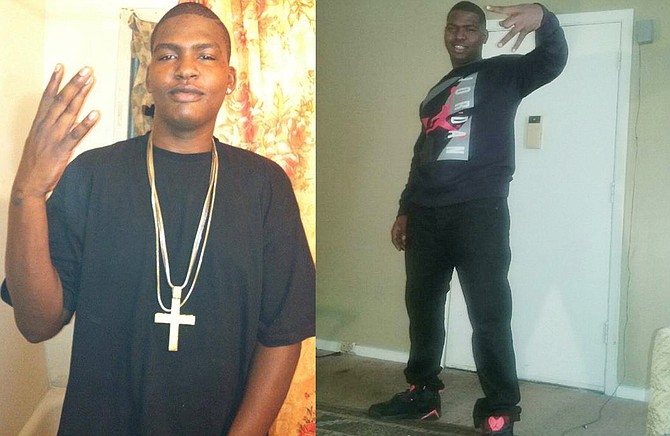


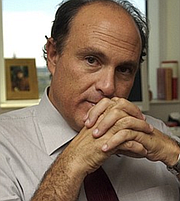

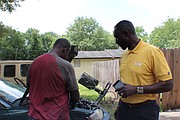

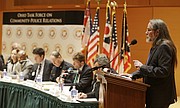

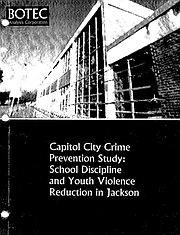
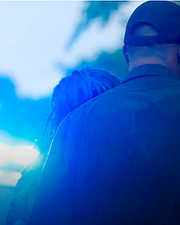
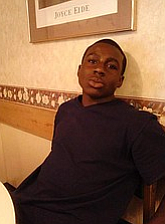
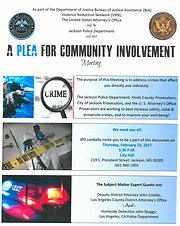
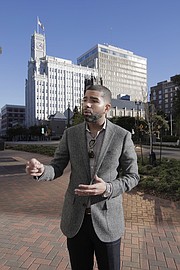

Comments
Use the comment form below to begin a discussion about this content.
comments powered by Disqus